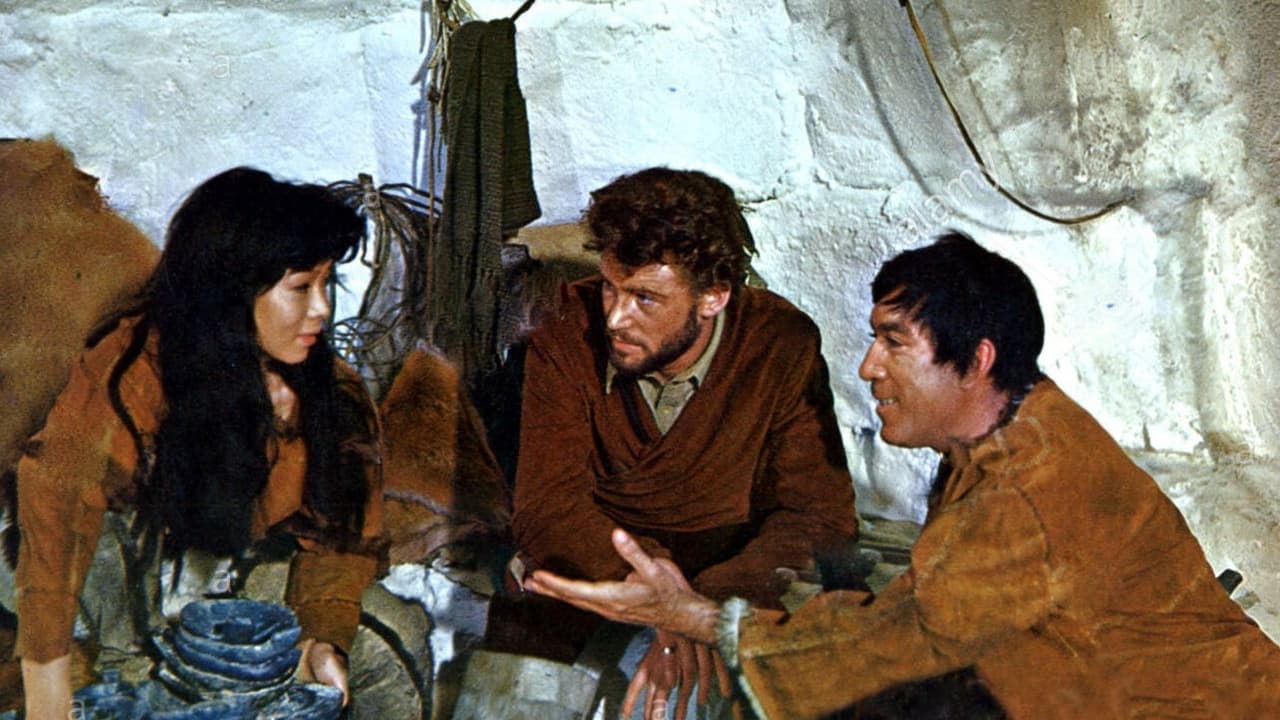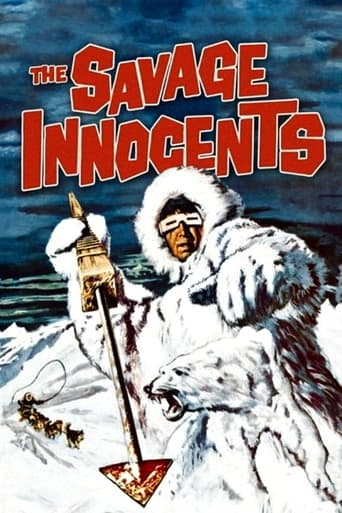

This film is not without its merits. The second unit shot some really quite beautiful location footage in the Arctic, and the cinematography throughout is impressive. Anthony Quinn brings tremendous verve to the role, and there are several memorable turns by the supporting cast, particularly Peter O'Toole.But it's depressing to see how many people regard this as an accurate portrayal of Inuit culture. One hardly knows where to begin! The Inuit customs regarding "wife-sharing" are distorted (the idea that it would be a terrible insult not to accept such an offer is groundless), and the use of "laughter" as a euphemism for sex is merely an old Hollywood notion. Inuit mothers are not left until their mother's death to be told of common matters such as the importance of cutting a child's umbilical cord, and a grandmother, however infirm, would never be left out in the open to be eaten by a polar bear (a special igloo would instead be prepared, with important personal items, and then sealed up, after which the village would be moved). Most insulting of all is the notion that somehow Inuit would be unaware that babies are born without visible teeth!The inaccuracies are not merely cultural, but historical as well. There is simply no period of time when the Inuit (or other Arctic groups such as the Inighuit, Inupiat, or Yupik) would have been unfamiliar with firearms and yet exposed to 1960s-style rock music -- these events are anywhere from 75 to 100 years apart, depending on the region. Inuit who went to trading posts would never be mocked by other Inuit, or by traders, at a trading post -- trading was serious business -- and would never be sold a gun with zero ammunition. This is not to say that traders were always totally fair; the guns were often of inferior quality, and the addiction to a source of powder and shot, along with the switch to fur-bearing animals as a sort of cash crop, were indeed problems.The saddest thing of all is that, 27 years before "Savage Innocents," a far more accurate account of the disparities, tensions, and injustices between Inuit and traders and police was released by a major Hollywood studio -- this was 1933's "Eskimo," starring Ray Mala, a half- Inupiat Alaskan actor.Having nearly no Inuit in the cast at all is, despite comments to the contrary, a problem as well. Hollywood had cast Inuit as Inuit as early as 1911, and "Eskimo" enjoyed an almost all- Inuit cast. The fact that all of the principal photography was done on a sound stage decorated by people with no knowledge whatever of either Inuit or northern homes is a further issue.There's no question that "Savage Innocents" works hard to elicit sympathy with an "alien" culture -- the only problem is that this culture is almost entirely a fantasy.
... View MoreI recently bought The Savage Innocents on a Region 2 DVD. Most US DVD players can be easily converted to play Region 2 DVDs. It is in Mono and full frame, but very good. Though it never says so, it appears the movie was suppose to take place in the 1950s because a very bad rock song plays on the jukebox. The movie was filmed mostly on stages and by an Italian studio. It is unclear if it was suppose to take place in Alaska or Canada. Having lived in Alaska for 30 years, I am sure there were no Eskimos in Alaska in the 1950s who did not know about firearms. This is especially true because of the Eskimo Army units organized during World War II. That being said, I enjoyed the movie and seeing it again after so many years. It is interesting to compare the plot of this movie with one called the " Wild North" from 1953 (The Savage Innocents was released in1960). It stared Steward Granger and Cornel Wilde and has a very similar plot. In Wild North, Granger accidentally kills a man and is arrested by Wilde a Canadian Mounted Policeman. They have a number wild experiences when Wilde attempts to takes Granger back to civilization for trial. Wilde eventually decides to let him go free. In my mind the plots are too similar not to be from the same source.
... View MoreI saw this movie in its original release, ca. 1960, while living in Canada. We didn't see it so much a drama as an exposition of Eskimo (now Inuit) culture, behavior, and mores that used the story line as a vehicle to help in that process. And, of course, it is visually stunning.A story I heard at that time claimed the reason the secondary roles are not played by Eskimos was that they didn't have the concept of lying in their culture, and acting -- pretending to be another person, as opposed to taking on the role of, say, a seal in a story-telling activity at a communal gathering -- requires that one, essentially, lie. That is, the claim was that the casting staff could not find an Eskimo that could act.There are episodes in the portrayal that seem over-acted, but that opinion may be a result of my not having personal experience with how Eskimos would actually behave in the activity being portrayed in those scenes. But the scene of death and survival after the sled breaks through the ice is, to coin a phrase, chilling. Asked for help to save the soaked Mountie, Quinn, in the lead Eskimo role, responds, "That man is dead." And then you watch the Mountie freeze to death in under two minutes. Very powerful.Highly recommended.
... View MoreI saw this movie many years ago. My recollection of it is that is a documentary comment on the interface of two widely different cultures. I also just finished reading Kabloona a book written by a white Frenchman in the later 1930s about the Eskimo Culture. The points made in the book confirm those points made in the movie. The Eskimo apparently is a guileless innocent whose life consists primarily of staying alive and fed. The innocence of these people was highlighted in the scene where Anthony Quinn came back to his igloo and found that his wife had given birth. He asked her the baby's name and when she told him, he responded in amazement, "How did you know?" As far as the scene where a man's hands were stuffed into a recently killed dog is concerned, the speed with which freezing occurs at 50 below zero is not to be believed. That scene demonstrates the fact that the Eskimo regards his dogs as livestock and useful. Shocking, but apparently realistic.
... View More